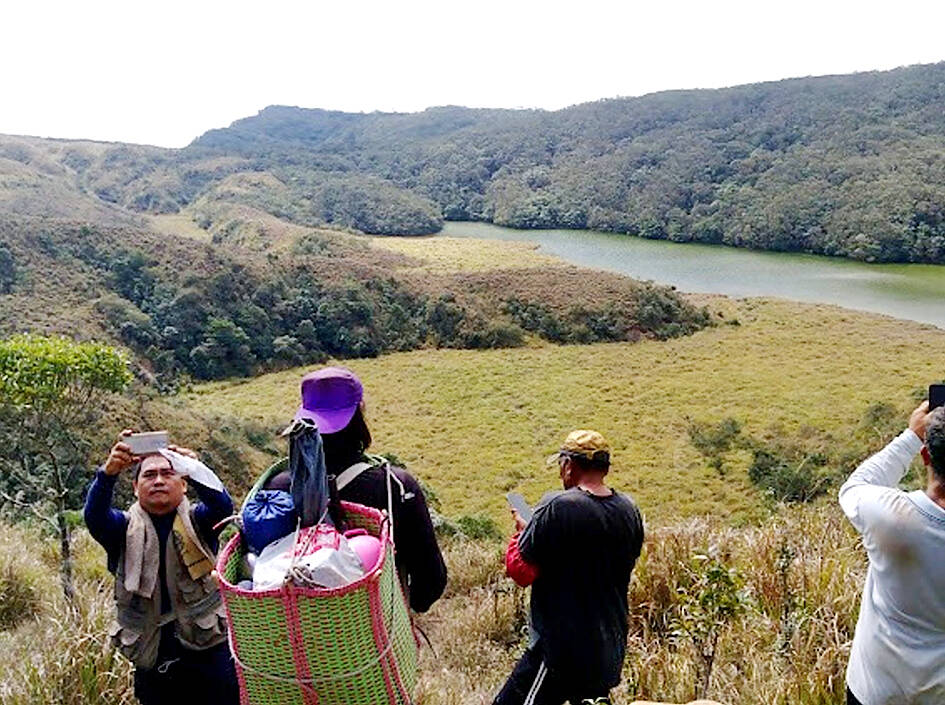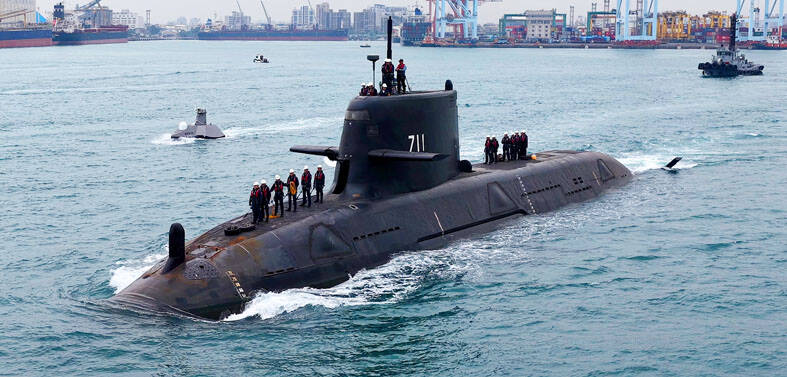The wetlands around Siiaoguei Lake (小鬼湖) in Taitung County is home to one of Taiwan’s most pristine high-elevation habitats and is considered a sacred place by local Rukai communities.
The wetlands are known for their ecological diversity, and while that might be partly due to their remote location in a nearly inaccessible part of Taiwan, they also benefit from a Rukai legend that makes hunting near the lake taboo.
Known in the Rukai language as Taidrengere (“Little Ghost”), the lake sits at an elevation of 2,050m above sea level on the border of Taitung and Pingtung counties. It covers 18 hectares and has a maximum depth of 1.5m.

Photo courtesy of Lravorase Lra-madaralrae via CNA
The area was incorporated into the Dawushan Nature Reserve (大武山自然保留區) when the reserve was established in 1988. It was designated as the Taidrengere Important Wetland in 2018 due to its importance as a wildlife habitat.
The most recent ecological survey of the wetland, conducted from 2020 to 2021 by National Pingtung University of Science and Technology professor Wang Chih-chiang (王志強), recorded 23 mammal species, including the endangered Formosan black bear and Formosan serow.
The survey also documented 41 species of birds, two reptile species, five amphibian species and two types of fish, as well as 158 plant species, of which 10 were on the International Union for Conservation of Nature and Natural Resources’ Red List of threatened species.
As with many high-elevation lakes, Siiaoguei Lake was originally fishless, although it now has established populations of common carp and pond loaches, Taitung Forest District Office head Wu Chang-yu (吳昌祐) said.
The common carp is the lone survivor of a 1979 Pingtung County Government initiative that also tried to introduce catfish and grass carp to the lake, while the pond loaches — which normally live at low elevations — were likely released by a visitor, Wu said.
The Rukai legend that has helped keep the area’s environment pristine is the story of “Princess Baleng and the Snake King.”
Versions of the legend abound, many of which were collected and preserved by late folklorist and Taromak village warden Su Chin-cheng (蘇金成).
In the most widely circulated version of the story, the daughter of a Rukai chieftain named Princess Baleng meets a young man named Adalio at the lake and falls in love with him.
However, on the day of their wedding, Adalio arrives in the form of a hundred-pace snake at the head of a party of wild animals.
Baleng’s family, recognizing Adalio as an incarnation of the “Snake King” that protects the area, opposes going through with the marriage, but is also wary of offending the suitor.
Hoping to dissuade him, they demand that Adalio pay the bride price in seven-colored glass beads, which could only be obtained by descending the mountain and collecting them from the sea.
Surprising the princess’ family, the Snake King retrieves the beads and is allowed to marry Baleng. Immediately afterward, the two disappear into the lake and are never seen or heard from again.
Because of this legend, Rukai view the lake as a sacred site and enforced taboos against hunting or making excessive noise there.
Su said a belief later developed among Rukai that the lake became the eternal resting place of the couple’s souls after their death.
Su said that, before her passing, his mother comforted her loved ones by saying that her soul “would go visit family and friends, and then return to the lake to reunite with her ancestors.”
Other versions of the story vary widely. In one telling, the lake is a child born to Princess Baleng and the Snake King, while in another, the princess and a young man from another tribe commit suicide in the lake after their families reject their union.
Regardless of the version, the legend, and its important place in Rukai culture, have contributed to the conservation of the area’s ecosystem.
In recent years, young Rukai have organized regular expeditions to the lake with their elders to better understand their history.
The Taitung-based branch of Rukai — Taromak, or eastern Rukai — completed a survey of its traditional lands in 2018.

US climber Alex Honnold is to attempt to scale Taipei 101 without a rope and harness in a live Netflix special on Jan. 24, the streaming platform announced on Wednesday. Accounting for the time difference, the two-hour broadcast of Honnold’s climb, called Skyscraper Live, is to air on Jan. 23 in the US, Netflix said in a statement. Honnold, 40, was the first person ever to free solo climb the 900m El Capitan rock formation in Yosemite National Park — a feat that was recorded and later made into the 2018 documentary film Free Solo. Netflix previewed Skyscraper Live in October, after videos

NUMBERS IMBALANCE: More than 4 million Taiwanese have visited China this year, while only about half a million Chinese have visited here Beijing has yet to respond to Taiwan’s requests for negotiation over matters related to the recovery of cross-strait tourism, the Tourism Administration said yesterday. Taiwan’s tourism authority issued the statement after Chinese-language daily the China Times reported yesterday that the government’s policy of banning group tours to China does not stop Taiwanese from visiting the country. As of October, more than 4.2 million had traveled to China this year, exceeding last year. Beijing estimated the number of Taiwanese tourists in China could reach 4.5 million this year. By contrast, only 500,000 Chinese tourists are expected in Taiwan, the report said. The report

Temperatures are forecast to drop steadily as a continental cold air mass moves across Taiwan, with some areas also likely to see heavy rainfall, the Central Weather Administration (CWA) said. From today through early tomorrow, a cold air mass would keep temperatures low across central and northern Taiwan, and the eastern half of Taiwan proper, with isolated brief showers forecast along Keelung’s north coast, Taipei and New Taipei City’s mountainous areas and eastern Taiwan, it said. Lows of 11°C to 15°C are forecast in central and northern Taiwan, Yilan County, and the outlying Kinmen and Lienchiang (Matsu) counties, and 14°C to 17°C

STEERING FAILURE: The first boat of its class is experiencing teething issues as it readies for acceptance by the navy, according to a recent story about rudder failure The Hai Kun (海鯤), the nation’s first locally built submarine, allegedly suffered a total failure of stern hydraulic systems during the second round of sea acceptance trials on June 26, and sailors were forced to manually operate the X-rudder to turn the submarine and return to port, news Web site Mirror Daily reported yesterday. The report said that tugboats following the Hai Kun assisted the submarine in avoiding collisions with other ships due to the X-rudder malfunctioning. At the time of the report, the submarine had completed its trials and was scheduled to begin diving and surfacing tests in shallow areas. The X-rudder,